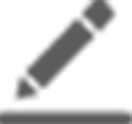Thanks to import curbs, trade gap shrinks to $23.7b
The government has been able to slash its trade deficit by a significant 40% to $23.7 billion in the first 10 months of current fiscal year, driven down by strict restrictions on imports in a bid to avoid default by choking the economy and stoking inflation.
Pakistan Bureau of Statistics (PBS) on Tuesday reported that the gap between imports and exports shrank by $15.6 billion, or 40%, in July-April of current fiscal year.
Effectively, the government was saving trade dollars to shield itself in the backdrop of failure to persuade the International Monetary Fund (IMF) to revive its loan programme.
A major jolt to imports came in April when purchases from overseas markets slumped to less than $3 billion, half of the country’s import needs and triggered serious supply issues. As a result, many factories were either closed or running partially owing to the lack of essential raw material.
The stalled IMF programme has remained one of the major failures of the PML-N led coalition government. Ninth review talks with the lender ended on February 9 and since then the Ministry of Finance has been claiming that a staff-level agreement will be reached “very soon”.
PBS data showed that in the July-April period, Pakistan imported $46.7 billion worth of goods, down by $18.6 billion, or 28.4%, compared with the same period of last year.
The slump in imports is temporary, caused by administrative controls, which forced banks not to clear Letters of Credit (LC) as well as other administrative hurdles.
Earlier, the government had projected overall imports at around $65.6 billion by the end of current fiscal year. According to revised estimates, imports may decrease to around $55 billion in FY23.
A major benefit of import curbs is reduced pressure on Pakistan’s foreign exchange reserves, which stand at $4.5 billion. On the other hand, inflation, stoked by the shortage of goods, has peaked to 36.4%, the highest since 1964.
Other factors fuelling inflation are currency devaluation and increase in utility tariffs.
PBS stated that exports contracted by 11.7% during the July-April period, amounting to just $23.1 billion. Annual export target has been set at $38 billion but only 61% of the goal was reached in the first 10 months. Revised estimates show exports may stand at less than $28 billion.
However, the government does not expect any major rise in exports during the next fiscal year too and has put them at $30 billion.
Owing to the low exports, the government has not been able to minimise the gap in its external financing needs. The trend is disturbing as exports have gone down despite massive currency devaluation over the past one year.
In April alone, exports amounted to $2.1 billion, down $773 million, or nearly 27%, compared to the same month of last year.
The decline raises questions over the government’s strategy for enhancing exports, which has so far revolved around subsidising the rich exporters who pay almost no income tax but get subsidised inputs.
On a year-on-year basis, imports dropped nearly 56% to just $2.9 billion, a temporary phase that has contributed to higher prices and shortage of goods in the country.
Trade deficit narrowed by 78% to just $829 million in April, a steep reduction of $3 billion compared to the same month of last year.
Similarly, the month-on-month trade gap shrank by 43% as exports dipped by nearly 11% and imports fell by 23%.
Because of the restrictions on imports, the country had a big current account surplus in March, a trend that may continue in April as well due to trade deficit of only $829 million.




